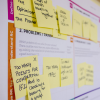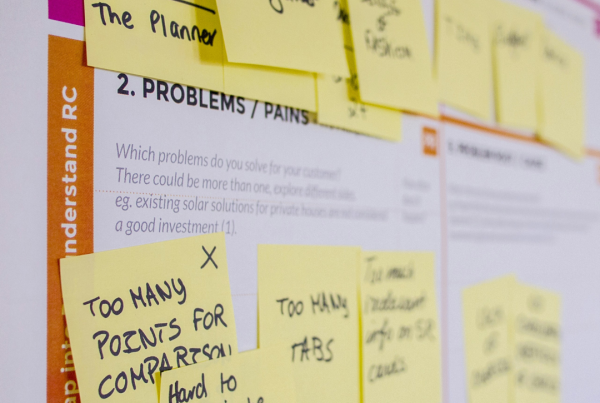As a product manager, you’re never working alone. Beyond product roadmaps and deliverables, you are often the bridge between teams, management, investors, and customers. Navigating multiple differing opinions and motivations can be tricky.
If you want to be great at your job, it’s crucial to learn how to effectively manage your stakeholders because this affects the product’s success and, let’s face it, your mental health at work.
In this article, I will share the things I’ve learned as a product consultant over the last 15 years. I’m writing as someone who is usually roped in to help improve things. I’ve seen different setups and challenges over the years in various companies and I believe it has helped me form an unbiased view.
Who are your stakeholders?
A stakeholder is someone who has a stake in your product, is affected by it, or is interested in it. Based on this definition, as a product manager, your stakeholders will likely be:
1. Internal teams who work on the product
- Development team: engineers, designers, and testers
- Design team: UX/UI designers, UX writers, and UX researchers
- Marketing and sales team
- Customer support
- Legal and compliance team
- Finance team
2. External partners or vendors who work on the product. Some companies may outsource parts of the design and development or hire consultants that help.
3. Leaders and executives
- CEO, COO, CFO, CTO
- Department heads or directors
- Any leader and advocate who provides advice or has a say in the product.
4. Board of directors
5. Investors
6. Customers
Not all stakeholders are equal.
Some have more say and are more involved in the product, such as leaders, directors, or executives. Some have more power but are less involved in the product. These are the investors and your customers. Internal team members are usually people who have little power in decision-making but are highly involved in the product. For the purpose of this article, I am excluding customers from the stakeholder management tips I’m talking about.
You want to make sure you manage each of them effectively, involving them when necessary, and updating them frequently so they can make decisions or accomplish their tasks better.
7 Effective Stakeholder Management Tips for Product Managers
Work on building and maintaining trust
Your stakeholders will have different opinions and goals. For example, management may want to trim the overall budget, sales and marketing may want to launch a new feature every 3 months, and developers may want a longer testing phase. As a product manager or leader, you don’t have the authority to do things your way. But you still need the stakeholders to decide or
do their job, so things move along well.
The best way to handle stakeholders is to build trust and nurture it. When people trust you, they are more likely to appreciate your opinion, collaborate better, and may even be more forgiving when you mess things up.
How do you build trust in a professional relationship? Cultivate simple habits like attentive listening, regularly staying in touch, setting realistic expectations, communicating clearly, and being reliable, consistent, and proactive. Always act with integrity. Your words are only as good as your actions.
Understand the decision-maker hierarchy
When I bring multiple teams together in a design sprint, we always designate one decision maker who has the final say in a deadlock. In any organisation, there is a decision-maker hierarchy, or at least there should be one. If various teams are making decisions that are creating hurdles in the product process, you’ll struggle with your work.
First, there should be a final decision maker in case you can’t find a consensus, and this may be a different person, depending on the problem and context. Secondly, all stakeholders need to understand this rule when collaborating. It will save you a lot of time and headaches. If you’re the one deciding on a solution to a problem, weigh each option and then be firm with your decision.
Engage with the stakeholders early and often
Another thing I try to do is to involve the stakeholders early in the product process, and keep them updated regularly. This way, I am getting multiple points of view and advice before I start on any major work on the product. This could be in the form of a kick-off meeting or a workshop before I run a design sprint.
You’ll also want to host regular update meetings to provide an opportunity for questions from your stakeholders, and a chance for them to review your plans and progress. Come prepared for these meetings, use visuals to help convey your updates, and keep it short.
Working with your stakeholders early and regularly will help build trust and inject a sense of working camaraderie, making your work smoother when you need their help.
Communicate clearly and be transparent
Communication is important in any job, but it’s even more so when you’re dealing with many stakeholders daily. One thing people tend to forget is that listening is part of communicating too. Work on your listening, speaking, and negotiating skills.
To communicate effectively, you need to understand the stakeholders’ needs and concerns. Which metric is important to them? What is their motivation? You can then tailor your message. Always focus on the value that is important to each stakeholder. Think about the value you are trying to build. What is the financial, design, technical, and customer impact that you’re aiming for?
And always be transparent in your communication, openly sharing your knowledge and the products’ progress. This will help when you need to make changes and make collaborating much easier.
Always back it up with data
What’s the easiest way to convince your stakeholders? Back it up with data.
Most of the time, numbers are hard to argue against. As a product manager, you should be well-versed in product and market research, data, and analytics. If you’re not, get familiar with all of it. Without data, all you have is your opinion and ideas. And if you’re new in your role, you haven’t built that trust with your stakeholders yet to be able to convince them easily.
One thing handy is to document everything, so you will always have these things at your fingertip when you need to communicate with or convince a stakeholder. Even if it takes a few hours of your day, spend the time to write the documentation. It helps you to organise your work and also provides a reference for your stakeholders.
Hold stakeholders accountable
Just because you are often the bridge between teams, it doesn’t mean you need to please or give in to your stakeholders. They are still accountable for their mistakes and their conduct around other people. If someone is always late, missing their deadlines, or not a team player, either speak to them about it or their manager. Don’t tolerate anything less than professionalism at work.
You’ll need to maintain a professional and unbiased stance to create a healthy working environment. Don’t favour one stakeholder over another, especially in making decisions. Favouritism will quickly alter the group dynamics and you will have a harder time to get people to do anything.
Be adaptable
Finally, you need to be flexible and adapt to changing circumstances. There are many elements that are out of your control, including market trends, new technologies, budget, team structure, and organisation. Expect things to be fluid, and always find the best way to work around issues and changes. Your stakeholders will respect you for it, and trust you even more.
If you find yourself dealing with a tough stakeholder, there are several ways to approach it. If possible, you can talk it out with the person to iron out your differences; perhaps it’s due to different communication styles and mismatched expectations. The other alternative is getting an outsider without a vested interest in the product, such as a consultant, to pitch the best way forward. The third option is to refer the issue to someone higher than you, such as your manager or executives. At times, the issue may be bigger than your role, and it needs someone with more authority to smooth out the issue.







